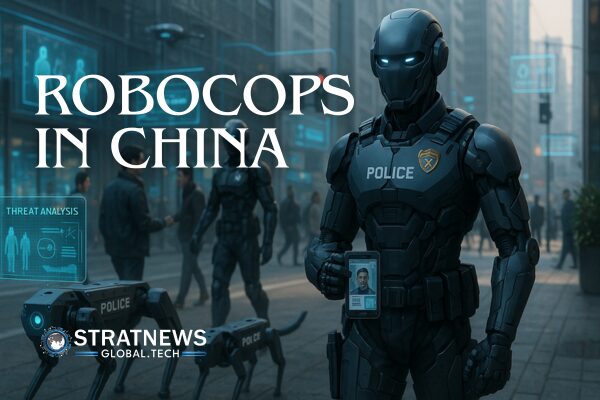Robots Now Supporting Traffic Management and Patrol Duties
The police department in Mianyang City, located in southwest China’s Sichuan Province, has introduced robot police officers to support law enforcement tasks, including traffic control and public safety patrols. These advanced humanoid robots are now operating alongside human officers to enhance daily policing operations.
Deployed during peak traffic hours—from 08:00 in the morning until 17:00 in the afternoon—the robots are helping to manage congestion and ensure smoother vehicle movement across key city roads. Equipped with multi-modal artificial intelligence, these machines are designed to interact with their surroundings and respond intelligently to dynamic traffic conditions.
Local residents have taken note. “It’s my first time seeing a robot directing traffic, and it’s a smart way to encourage rule-following,” said Xie Yun, a resident of Mianyang.
Robot Dogs Join the Force in SWAT and Patrol Roles
In addition to humanoid robots, the city’s police force has also deployed robot dogs for more advanced tactical and surveillance operations. These four-legged machines recently took part in a SWAT training exercise, where they demonstrated their ability to subdue a suspect using a non-lethal net during a simulated school attack.
Each robot dog is equipped with four surround-view lenses and a panoramic 360-degree camera mounted on its head. These components capture real-time visual data and transmit it directly to the police monitoring system, enabling efficient oversight and rapid response.
Because of their ability to carry out regular patrols and conduct identity checks without raising alarm, these robotic dogs have been deployed in sensitive locations. “We station them in business districts, by artificial lakes, and in science and technology parks,” explained Wang Jianhai, director of the Intelligence Command Center in Mianyang’s Science and Technology City New District.
A Glimpse Into the Future of Urban Policing
Mianyang’s integration of robotic systems into law enforcement reflects a growing trend in smart city development. These AI-powered tools not only increase efficiency but also reduce risk to human officers in certain situations.
With autonomous patrolling, real-time data transmission, and the capability to perform non-lethal actions, these robotic aids are expected to play a larger role in urban safety strategies.
with inputs from Reuters


